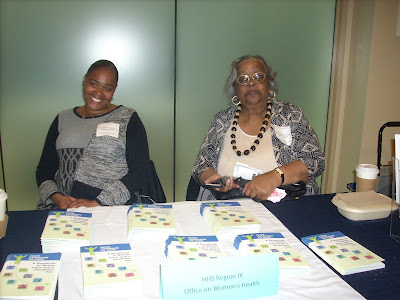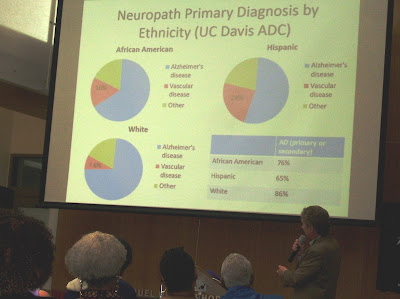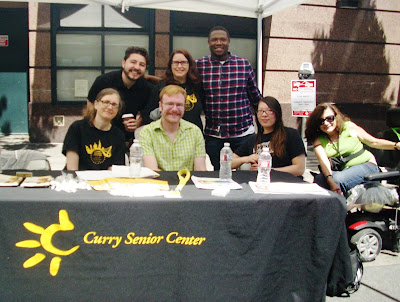A former
client recently called to let me know that she has settled in San
Antonio , where her niece provides home care that my client could
not afford while living alone in San Francisco San Francisco
Last month, SF Main Library hosted a panel discussion, From Homelessness to Housing in San Francisco, moderated by San Francisco Chronicle Editor-In-Chief Audrey Cooper, and featured BART Board Director Lateefah Simon, District 2 Supervisor Mark Farrell, San Francisco Chronicle Reporter Kevin Fagan, Department of Homelessness and Supportive Housing Director Jeff Kositsky, and Coalition on Homelessness Executive Director Jennifer Friedenbach. Jeff proposed ending the home mortgage income tax deduction, which has been used by at least one-third of upper-income taxpayers; instead, he favored Germany’s model of tax incentives for rentals. (Trump’s proposed tax plan to retain the mortgage tax deduction while doubling the standard deduction would likely further benefit higher-income taxpayers instead of broadening home ownership.)
Last month, SF Main Library hosted a panel discussion, From Homelessness to Housing in San Francisco, moderated by San Francisco Chronicle Editor-In-Chief Audrey Cooper, and featured BART Board Director Lateefah Simon, District 2 Supervisor Mark Farrell, San Francisco Chronicle Reporter Kevin Fagan, Department of Homelessness and Supportive Housing Director Jeff Kositsky, and Coalition on Homelessness Executive Director Jennifer Friedenbach. Jeff proposed ending the home mortgage income tax deduction, which has been used by at least one-third of upper-income taxpayers; instead, he favored Germany’s model of tax incentives for rentals. (Trump’s proposed tax plan to retain the mortgage tax deduction while doubling the standard deduction would likely further benefit higher-income taxpayers instead of broadening home ownership.)
Several homebound
clients, formerly homeless and now living in permanent supportive housing,
appeared in a related exhibition, Everyone Deserves a Home, at SF Main Library. This exhibit showed photos of residents holding signs handwritten in
response to “What does home mean to you?” and oral histories of their
experiences of coming to San Francisco and their struggles (trauma, neglect,
substance abuse, poverty, racism, etc.) that led them to their current home.
While
home is important to age in place,
the consequences of isolation and loneliness from being homebound and aging without community was the topic at the April 27, 2017 hearing before the U.S. Senate Special Committee on Aging. Experts testified on the negative mental, behavioral and physical health
outcomes of isolation and loneliness, including the oft-quoted research finding
that prolonged isolation is comparable to smoking 15 cigarettes a day! (Effective April 1, 2017, California
Therefore,
I encourage my homebound clients (especially if living alone and watching TV)
to venture outside of their home (comfort zone) and into our communities, when
possible. And thanks to technology, I
hope my blog can help bring the community (engagement, resources) to them!
SFSU Gerontology Program Coordinator Darlene Yee and College of Health & Social Sciences Dean Alvin Alvarez welcomed
160+ guests to SFSU Gerontology Program’s
30th Anniversary Dinner held on campus. (SFSU Gerontology
Program—the first and thus oldest graduate gerontology program in the California State University and University of California
Serenaded by campus musicians
Dinner plate
Faculty table with Professor Brian de Vries, lecturer and
California Advocates for Nursing Home Reform (CANHR) founder Pat Mc Ginnis, and
Professor Annabelle Pelham
Classmates Ardath, Diane, Kay, Mary, Lois and Raenika
Classmates May (holding up donation envelope) and Ardath
Pat Mc Ginnis presented Distinguished Long-Term Care
Advocate Award to Mark Leno, State Senator (2008-2016), for his advocacy of consumer
protections for aged constituents: increase minimum wage and sick days for IHSS
workers (SB 3), ban on admissions to RCFE if risk of harm (SB 1153), RCFE
Eviction Protection Act (SB 897), etc.
Bayview Hunters Point Multi-Purpose Senior Services Director Cathy Davis and Aging Commission President and SFSU Gerontology alumna Edna James
I took vacation
leave to attend worthwhile JCCSF’s 10th
Annual Art of Aging Gracefully Resource Fair: Stay Vital, Healthy and Fit,
organized by Adult Programs Manager Shiva Schulz.
Margaret
Chesney, Director of Osher Center for Integrative Medicine at UCSF, presented “Outsmarting Stress, Enhancing Resilience & Optimizing Health in Today’s World.” She recommended BREATHE strategy to enhance well-being:
Be present with self in the moment -
slow down
Realistic goals - celebrate meeting
them
Everyday events – notice positives and share with others
Acts of kindness – create positive
events for others
Turn negatives around – reframe to
find silver lining
Humor – smile
End each day with gratitude
Department
of Aging and Adult Services (DAAS) Nutritionist Linda Lau at one of the busiest resource tables. According to the most recent DAAS Needs Assessment,
senior meals funding has shifted from congregate to home-delivered meals. Does this reflect pattern of growing
isolation of seniors at home? When clients tell me they are discouraged from
eating at congregate meal sites because site staff/volunteers attempt to
collect “suggested contribution,” I advise them to file complaint with DAAS!
Health Librarian
Janet Tom at SF Public Library table. I often refer homebound clients to
Friends for Life to borrow books, DVDs, CDs, etc. by mail. SFPL also has its own youtube channel.
Office on Women’s Health hosted Women’s Health Leadership Institute, which I participated in almost 4 years ago,
so always happy to reconnect with Regional Coordinator Kay Strawder (pictured
at right) and Public Health Advisor Sheila James (not pictured at JCCSF because
she was participating in Walk to Work Day). Since women outlive men, the future is female
…. but with attempts to repeal Obamacare, what is the future of women’s health?
Like Curious George Saves the Day: The Art of Margret and H.A. Rey (exhibit 5 years ago), I looked forward to this month’s opening of Roz Chast: Cartoon Memoirs – this time
with the living artist in person!
New Yorker cartoonist Roz Chast's memoir, Can’t We Talk About Something More Pleasant? is about an only child
providing care for elderly parents until the end.
Exhibit
included short film of Roz revealing that she wrote Can’t We Talk About Something More Pleasant? because “I didn’t want
to forget how they talked, and I didn’t want to forget how they were …”
Couch below speech balloons painted on wall provided photo opportunity
Journalist
Belva Davis moderated Alzheimer's Association 9th
Annual African American Caregiving and Wellness Forum at Ed Roberts Campus
in Berkeley
Rochelle
Woods, MD, delivered keynote, “Self-Care While Caring for Someone with
Dementia” reminding us that African-Americans are almost twice as likely to
develop Alzheimer’s, and tend to take care of family to age-in-place. African-Americans, especially women,
have capacity to tolerate stresses, but are more susceptible to effects of taking care. She said caregivers need to put their mask on first (maintain mind-body-spirit, MBSR), educate about dementia (The 36-Hour Day) including support, have fun (old man dancing), be smart and savvy (advance directives, power of attorney, life care planning).
Heather
Gray presented “Understanding and Responding to Dementia Behaviors” reminding us that people with Alzheimer’s still want independence and opportunities for participation/contribution,
yet may not have language to express their needs. Instead of stepping in and insisting something be done a certain way, let go if the person with Alzheimer’s can remain safe
and content/engaged/involved. It takes a
village, so reach out to the community for support.
“Ask the
Experts Panel” Discussion, with presenters plus Rita Hartgrave, MD, addressed
practical issues like when it’s time to go to nursing home, taking away car
keys, bathing, etc.
John Olichney, MD, presented “UC Davis’ Disparity in Brain Aging Research,” finding low levels of vitamin D is associated with cognitive decline. Since the body makes vitamin D through sun
exposure, many older adults (especially shut-ins) are low in vitamin D because
they are not outside enough. African-American
and Hispanic subjects had lower levels of vitamin D than white subjects, as
darker skin reduces the amount of sunlight absorbed. Overall, subjects with
inadequate Vitamin D levels lost episodic memory and executive function more
quickly.
Cynthia
Carter Perrilliat emphasized personal approaches to grief (process of healing
from loss) in her talk, “Managing Grief and Loss While Caregiving.”
Asha
Koshy, Program Manager at Bay Area Community Services Adult Day Health Care, presented
“Connecting to Loved One Through Home-Based Activities.” She reminded us of 3
keys for failure-free activities that engage:
- go with the flow
- praise effort
- acknowledge skill
Activities
can include arts and crafts, music therapy, cooking, reminiscing and exercise. Create a routine that is SPECIAL:
Schedule
Peace
Eliminate caffeine, especially at
night
Cue what to expect
Include in activities
Activity
Lights
Intergenerational drumming
at Berkeley
Black Cuisine in
Bayview
Last month, I volunteered at 37th Annual Black Cuisine Festival, fundraiser for Bayview Senior Services, at
Dance
outdoors to Bobbie "Spider" Webb and make vitamin D!
April 15
Tax March protesters called on Chicken Don (30 foot inflatable made in China) to release his tax returns, as every U.S. President has done so for past 40
years.
Dark Room Truck performs “Dump Trump Bump” protest song
Earth Day
“eye heart science” buttons
March for Science posters
Intergenerational March for Science from Ferry Building to City Hall
Now in
its 9th year, Livable City’s Sunday Streets Tenderloin offered live music, arts and crafts, information sharing by community
non-profit and government agencies, etc.—opportunities to increase physical
activity for all ages in a car-free environment!
Curry Senior Center, providing medical and social services since 1972 to seniors who make up half of the population in the Tenderloin, gave away toothbrushes! Alisa Oberschelp, MD, and Angela Di Martino wear black Curry Senior Center T-shirts.
Central City SRO Collaborative organizes with SRO (single-room
occupancy) tenants in San Francisco
Permaculture is the answer
Butterfly
effect: Be the change you want to see in the world! Artists transform 4 Corner Friday wall at Golden Gate and Hyde.
“I’m at peace with myself”
“I’m at peace with myself”










































